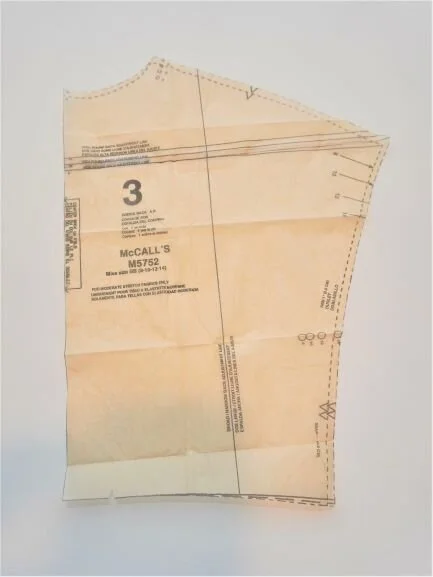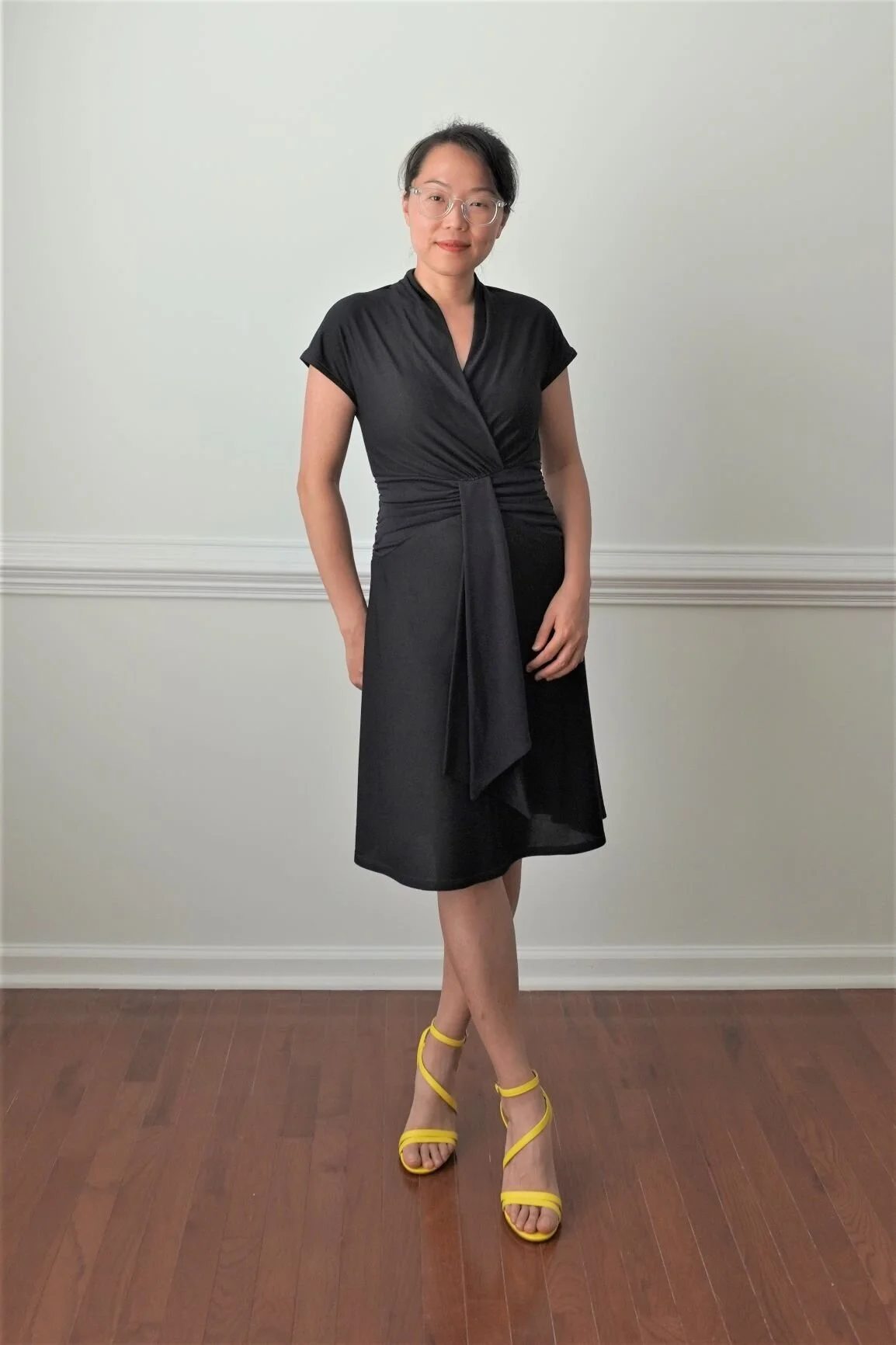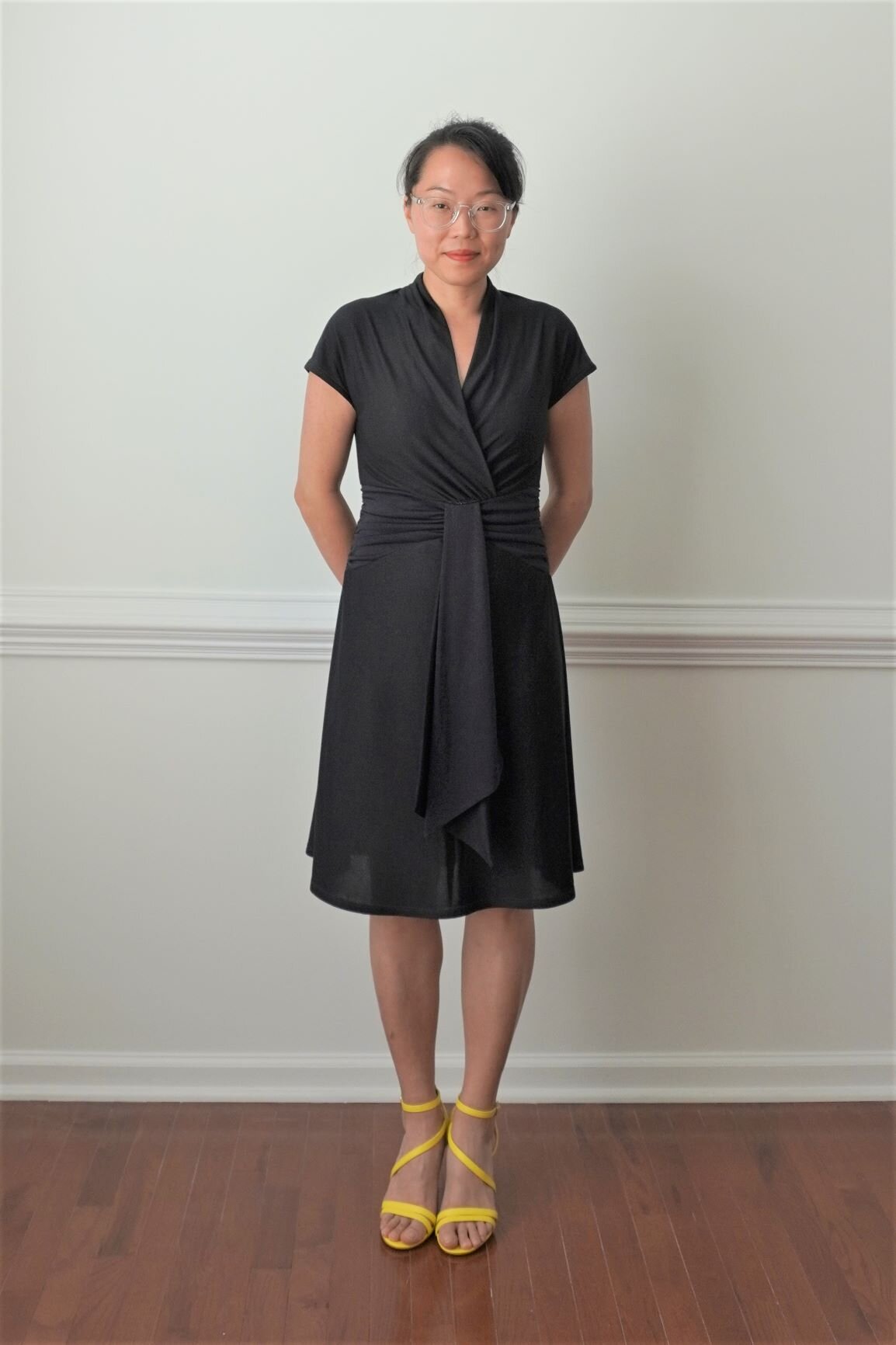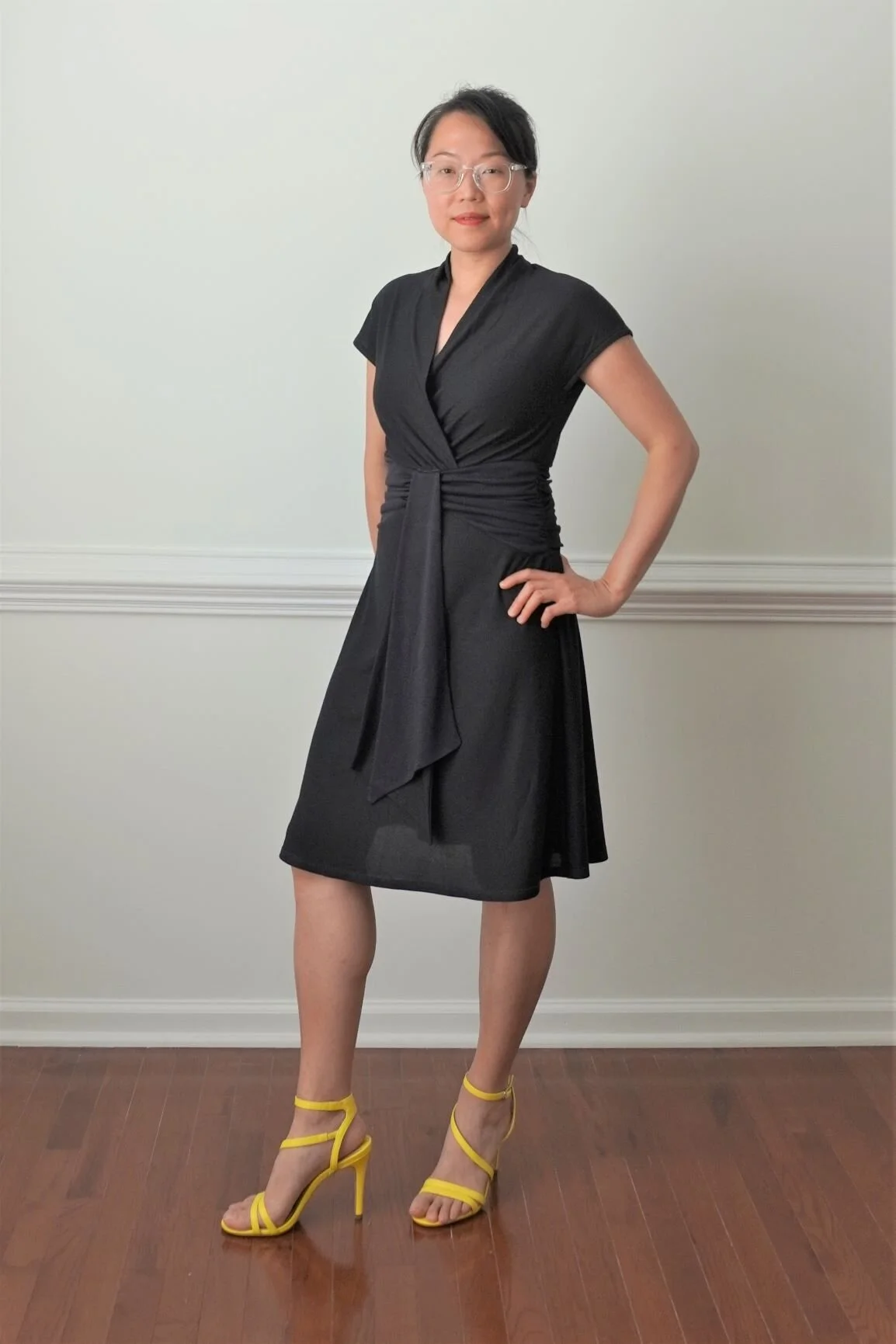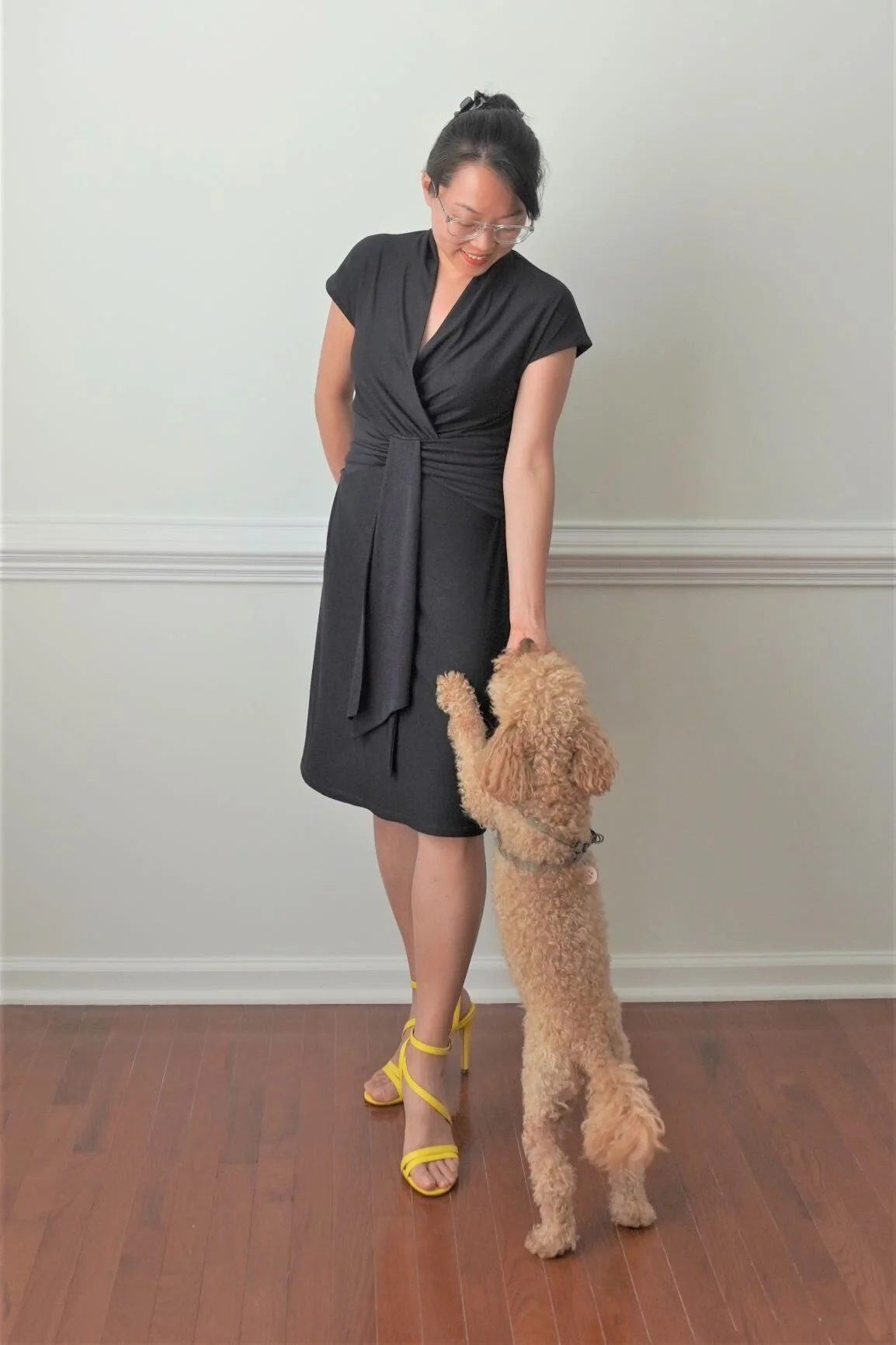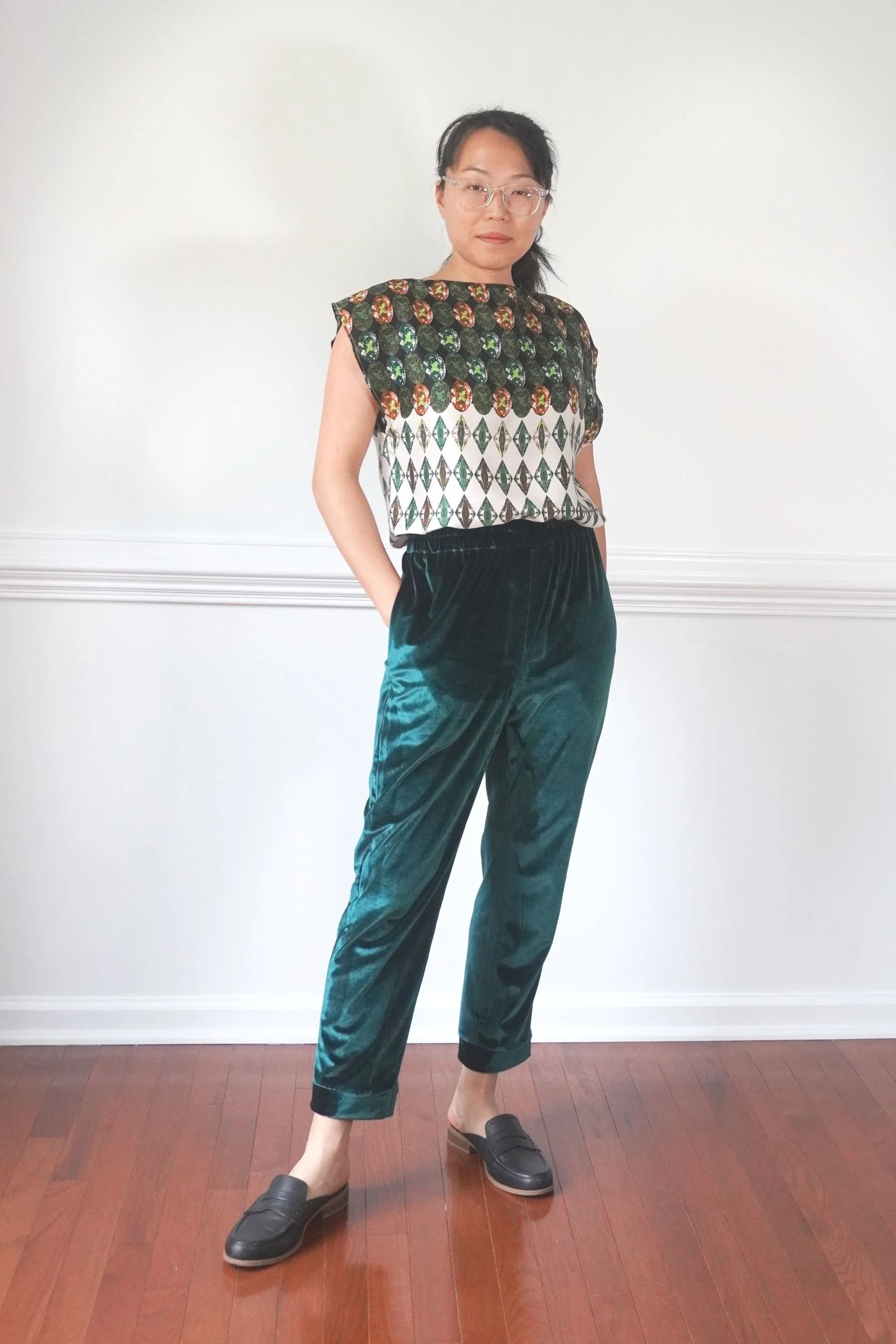Everyone loves a comfy yet flattering knit dress, so I was very excited when I came across McCall’s 5752, a Palmer-Pletsch pattern for “The Perfect Knit Dress.”
The pattern has received great reviews from other sewists, and I was initially drawn to the pattern because of the wrap silhouette, waist drape and cap sleeves of the dress. Having now made up the pattern, I’m not sure the dress lives up to its billing as “The Perfect Knit Dress,” as I still think the perfect knit dress is my tried-and-true Vogue 8379, a DVF-style wrap dress with collar and cuffs (see a sample here). Having said that, I do think McCall’s 5752 has some nice design features that might make the dress attractive for some figure types. For example, it features a mock wrap (instead of a true wrap), and the ruching and drape in the front and back of the dress is designed to camouflage tummy fat. It also comes with extremely detailed instructions on how to achieve the perfect fit, and the pattern helpfully includes many fitting lines which will make it easier for beginners to alter the pattern to suit their figures.
Pattern Alterations
I only made a few alterations to the pattern:
I made a small-bust adjustment (SBA) and reduced the width by about a quarter of an inch to account for my flat chest. The pattern includes an alteration line specifically for FBA/SBAs, and the instructions walk you through how to make such an adjustment if you don’t already know how to do so.
I made a straight back adjustment and took out a quarter of an inch to account for my straight posture. I made this adjustment by cutting a line in the back bodice pattern in the upper back area (the line is marked for a round back adjustment, but it can be used for a straight back adjustment as well).
I omitted the double lining in the midriff area. In that area, the pattern has you cut a front and back midriff piece, then you gather those pieces and sew them to front and back stays, and then you line the front and back stays with another lining layer. This would result in three pieces of fabric in the tummy area, which is not very flattering, so I omitted the lining layer. I also cut the front and back stays out of power mesh, which helps ‘suck in’ my tummy (much like Spanx) and create the illusion of a nipped-in waist.
I cut the drapes a bit narrower than the pattern piece directs because I was running out of fabric (my drape piece ended up being about 2 inches across on the narrowest side). This turned out to be fortuitous because the pattern calls for you to gather the top part of the drape, which would create even more bulk around the midriff area, which I don’t think is flattering. By contrast, I did not need to gather my narrower drape piece so the drape lay flat at the midriff, which I think is more flattering.
Construction Notes
I sewed the entire garment on my sewing machine using a lightning stitch and walking foot. (To learn more about the right sewing machine settings for stretchy fabrics, check out my handy chart of settings here.) I also sometimes placed a layer of tissue paper between the presser foot and my fabric when sewing, to prevent puckering along the seam line. (To learn more about how to sew knit fabrics without puckering, check out my post here.) It wasn’t always necessary to do this, but I did use the tissue paper trick when sewing the seams on the drape because I found that the seams were wavy and puckered if I did not stabilize with tissue paper.
I did not bother to tissue-fit, as suggested in the pattern instructions. I have never found tissue fitting to work very well, and by this point, I’ve sewn so many Vogue/McCall’s/Butterick patterns that I know what types of alterations are likely to be needed for my body. I simply made the alterations that I normally make with Vogue/McCall’s/Butterick patterns, then I loosely basted the dress together and tried it on to check the fit at the side seams. That showed me that the 1-inch side seam allowance was probably a bit too much, as the dress was too snug and made me feel like an overstuffed sausage, so I reduced the side seams to 7/8 inch. The resulting looser dress is much more flattering, in my humble opinion.
I interfaced the hem with half-inch strips of fusible knit interfacing to stabilize the fabric, then folded over the hem twice, each fold being half an inch wide. (Learn more about this technique by reading this post here.) I then sewed two parallel lines of stitching to hold the hem in place.
I hand-basted the gathers at the center of the front and back midriff, to secure the gathers and ensure that they are distributed evenly. Without these basting stitches, I found that the gathers tended to drift downwards and cluster at the bottom of the midriff piece, which isn’t very attractive.
The gathers at the front midriff are hand-basted to ensure that the gathers are evenly distributed
The Final Result
I do love the finished dress, which I think is quite flattering, especially with the addition of the power mesh to keep my waist nipped in. I like the curved shapes of the midriff pieces (which I think are far more flattering than straight lines across) and I think the drape does work well to camouflage belly fat.
My one reservation is I’m not sold on the back gathers, which to me seem like an odd touch. I think I read somewhere that Palmer-Pletsch included the back gathers because they were annoyed by the fact that the ridges of underwear show through the back of knit dresses. While I can understand the rationale, the VPL isn’t usually a big problem for me, so I don’t think I need the back gathers and I would consider omitting them if I were to make this again.
The other thing I don’t love is that the front facing/collar piece is loose and needs to be tucked in when the dress is worn. I considered securing the facing with a few stitches, but I’m afraid that will result in an unsightly dimple on the right side of the fabric. If anyone has any ideas on how to secure the facing without any visible stitching/dimples on the right side of the fabric, please let me know in the comments!



